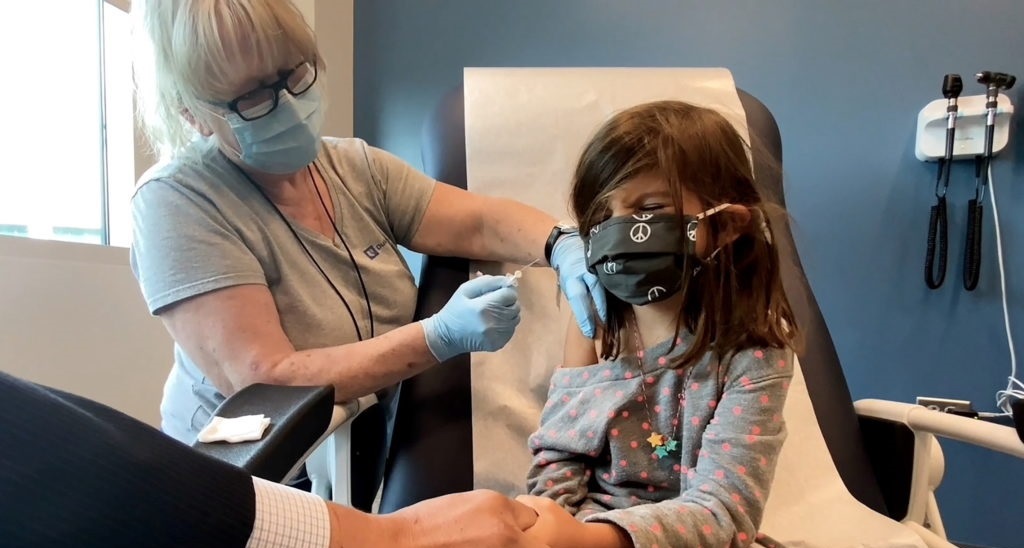MAY IS SKIN CANCER AWARENESS MONTH
What is Skin Cancer Awareness Month?
Occurring every May, Skin Cancer Awareness Month is devoted to raising awareness of the most common cancer in the United States. It’s estimated that every day about 9,500 people in the United States are diagnosed with skin cancer.1
This May, the American Academy of Dermatology (AAD) is raising awareness by sharing insights from board-certified dermatologists, personal stories, and key facts.
Knowing these key facts can help you prevent skin cancer and find it early:
- Many skin cancers could be prevented if people would protect their skin from the sun and stop using tanning beds.
- People of all colors and ages get skin cancer.
- When found early, skin cancer is highly treatable.
- Because skin cancer begins on the skin, you can find it early by performing skin self-exams.
- If you find a spot on your skin that’s growing, bleeding, or changing in any way, see the skin cancer expert, a board-certified dermatologist. This appointment could save your life.
Melanoma Monday® is Monday, May 1

On Melanoma Monday, the AAD encourages all Americans to begin a lifelong habit of examining their skin. Checking your skin for signs of skin cancer helps find skin cancer early when it’s highly treatable. Click the image to learn how to detect skin cancer.
What is Melanoma Monday?
This day is dedicated to raising awareness of melanoma, the most serious type of skin cancer.
The AAD began Melanoma Monday on Monday, May 1, 19952, and has observed it every year since. Melanoma Monday always occurs on the first Monday in May during Skin Cancer Awareness Month.
In 2023, it’s estimated that 7,990 people will die of melanoma.3
Many of these deaths could be prevented if people knew these facts:
- Caught early, melanoma is highly treatable.
- Melanoma can develop anywhere on the skin, including skin that’s had plenty of sun exposure and skin that’s usually protected from the sun.
- Melanoma can develop under or around your fingernails and toenails.
- You can find melanoma early by examining your skin for the ABCDEs of melanoma and checking your nails.
Dermatologists encourage people of all colors to check their skin
No matter your skin tone, dermatologists encourage you to check your skin for signs of skin cancer.
It’s true that if you have a darker skin tone, you have a lower risk of getting skin cancer. But people who have darker skin tones develop skin cancer. In darker skin tones, skin cancer is more likely to be found in an advanced stage when it’s harder to treat. Advanced melanoma can be deadly.
Getting in the habit of performing skin self-exams can help you find skin cancer early.

People of all colors get skin cancer. Checking your skin for signs of skin cancer can be life-saving.
You can reduce your skin cancer risk
Along with checking your skin for signs of skin cancer, the AAD encourages everyone to Practice Safe Sun. It can reduce your risk of developing skin cancer.
To #PracticeSafeSun year-round, follow three simple steps every time you’re outdoors:
- Seek shade.
- Wear sun-protective clothing.
- Apply sunscreen that offers broad-spectrum protection, water resistance, and an SPF of 30 or higher.
What will you do during Skin Cancer Awareness Month?
Now that you know the facts, what will you do this month to reduce your risk of developing skin cancer and find skin cancer early when it’s highly treatable?
Will you begin a lifelong habit of checking your skin for skin cancer? Will you Practice Safe Sun?
Many people schedule an appointment with a dermatologist for a skin cancer screening. Others sign up for a free skin cancer screening.
No one knows your skin better than a board-certified dermatologist. You can find a dermatologist in your area by going to Find a Dermatologist.
Images
GettyImages
References
1 American Academy of Dermatology. Skin Cancer Fact Sheet. Last updated 4/22/22. Last accessed 4/7/2023.
2 Miller DR, Geller AC, et. al. “Melanoma awareness and self-examination practices: results of a United States survey.” J Am Acad Dermatol. 1996;34(6):962-70.
3 American Cancer Society. “Cancer Facts & Figures 2023.” Atlanta: American Cancer Society; 2023.
Bài viết liên quan






